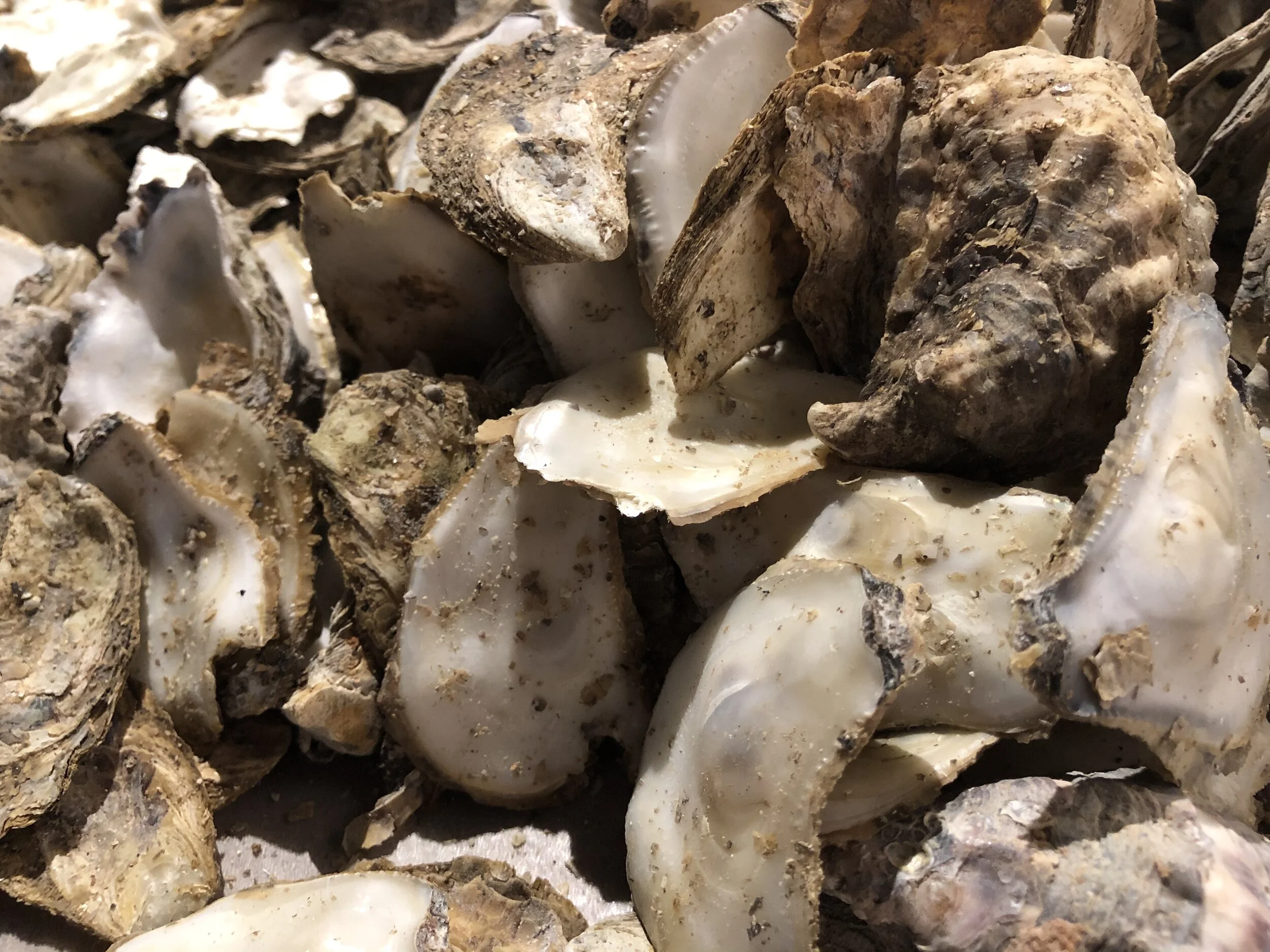This online exhibition will be on view until December 2025
The Sydney Rock Oyster is vulnerable to change in its environment caused by global warming and coastal development. In this Online Exhibition, Tasmania-based artist Dr Sarah Jane Moore asks us to listen to the Bandangi – the Sydney Rock Oyster. The artworks, poetics and songs weave together the oysters’ survival with cultural revitalisation, and make tangible the connectivity of science, art and stories.
Worlding With Oysters is the result of Dr Moore observing and interpreting the research of Wiradjuri scientist Dr Laura Parker, Indigenous Scientia Fellow in the School of Biological, Earth and Environmental Sciences. Dr Parker aims to ‘future-proof’ natural oyster populations through building resilience to ocean warming and acidification.
Through materiality, process and practices, the works in this exhibition are embedded with knowledges and wisdoms that give a renewed significance to the urgency of preserving the Bandangi. In this dialogue between science and art, the oyster shell becomes a vessel for ancient stories and a call to arms for us all to invest in imagining futures where communities respect, nurture and care for Sea Countries.
The work presented in Worlding With Oysters has been assisted by the Australian Government through the Australia Council, its arts funding and advisory body.
Opening remarks: Dr Brendan Burns, senior lecturer, school of biotechnology and biomolecular sciences
Video: Brian Landrigan
spoken word poetry
Sarah Jane Moore performs the poetics of Wordling With Oysters:
Songs
Dr Laura Parker
Dr Laura Parker, Indigenous Scientia Fellow, UNSW School of Biological, Earth and Environmental Sciences, describes her research on future-proofing natural oyster populations and working with artist Sarah Jane Moore.
Video: Anton Rehrl - Corvid Photography
Installation view – main library exhibitions space
Dr Sarah Jane moore and dr laura parker in conversation
Recorded during NAIDOC Week 2020, UNSW Library’s Curator Jackson Mann interviews Dr Sarah Jane and Dr Laura Parker. They share insights into their collaboration as an artist and scientist, the experience of women in their industries and the importance of the 2020 NAIDOC week theme 'Always Was, Always Will Be'. This interview was made possible by the UNSW Women’s Wellbeing Academy.














